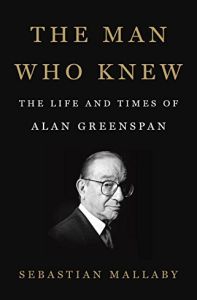Join getAbstract to access the summary!

Join getAbstract to access the summary!
Sebastian Mallaby
The Man Who Knew
The Life and Times of Alan Greenspan
Penguin Press, 2016
What's inside?
Former Federal Reserve chairman Alan Greenspan’s career mirrors the history of modern economics.
Recommendation
Historian Sebastian Mallaby details Alan Greenspan’s life, from his days as a traveling jazz musician to his career as a researcher, consultant, government economic adviser and chair of the US Federal Reserve. Mallaby’s presentation of the time Greenspan spent atop the Washington, DC, power pile delivers a history lesson in macroeconomics, US politics and the remarkable period of the Great Moderation. Mallaby concludes that the former head of the US central bank could have acted differently to reduce the scope of the 2008 financial crisis but that his failings were understandable. He paints Greenspan as neither a “maestro” genius or a foolish ideologue, but as an unusually talented man who did his best, tried to learn from experience and, arguably, got far more things right than wrong. getAbstract believes you won’t want to skip a page of this fascinating, albeit hefty, biography.
Summary
About the Author
Sebastian Mallaby is a senior fellow at the Council on Foreign Relations and a columnist for the Washington Post. He also wrote More Money Than God.





















Comment on this summary